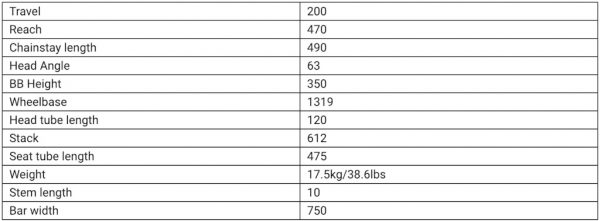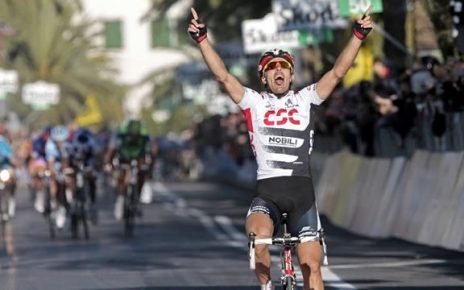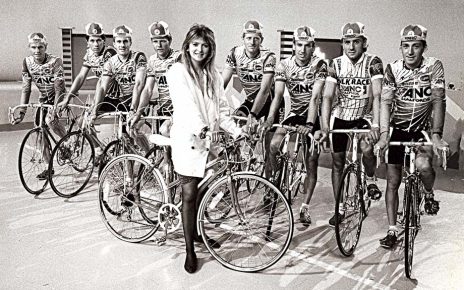As the test pilot for the wild Pole downhill bike a couple of years ago, Isak Leivsson is no stranger to out-there geometries. In the two years since then, he’s been eager to put some of his own experiments to the test and has now decided the best way to do that was to build his own downhill bike. The result is this steel sled that looks like it would be at home on Fury Road as much as it would on a downhill World Cup track.
The bike was built as a geometry experiment as Isak noticed that the trend for longer front end bikes has led to more stability in a straight line, but he found them much more difficult to corner. Isak believes that the ratio of front center to rear center is skewed too heavily forwards on these bikes, so he’s tried to bring it back in line and create a bike that shares the same stability as modern bikes but that can also corner easier.
He has used two main methods of achieving this. Firstly, he has much longer chainstays – they measure 490mm on this bike, dwarfing the 27.5″ wheel in the rear end, restoring that ratio to something a bit more balanced. He admits that the numbers are a bit of a guess on this first go, but he has based them on the ratio from Sam Hill’s bikes from his golden era and transposed that onto the bigger bikes we all ride today.
Secondly is a short cockpit, built around a 10mm stem, which allows him to have a big range of movement around the bike and keeps him in a central position while still having the wheels far away from him. Isak mentioned he could have slackened the head angle to achieve the same thing, but feels that it doesn’t work as well as his current method. The short stem is combined with a 470mm reach as Leivsson says he was looking for a feeling that was similar to his trail bike that has a 430mm reach and 50mm stem.
Full geometry
As this is mainly a geometry experiment, Isak hasn’t spent too much time worrying about suspension kinematics. He went with a single pivot design loosely based on the Kona bike he was already riding as an ambassador because it was simpler to get right and allowed him to get the bike rolling without too much faff. Isak built the bike from straight gauge 4130 Chromoly steel – 0.035”(0.9mm) for downtube, top tube and rear end, and 0.049” (1.2mm) for seat tube and tubes surrounding link.
A closer look at Isak’s handiwork. Steel was the material of choice purely for practical reasons. Isak was fabricating the bike himself and didn’t have access to the facilities to build a bike in any other material.
So has the experiment worked? Early indications from Isak are good. He says that he likes how the front wheel is constantly weighted without him ever having to consciously think about it, making the bike much easier to ride.
These kinks allow room for the shock piggyback and front wheel. It may look like a weak point, but considering Isak has already tested this bike on the biggest jumps at Windrock and hucked the bike off his roof, it seems to be holding up ok so far. He hopes to replace this with a properly curved downtube on the next iteration of the bike.
The linkage designed is inspired by a Kona Operator as Isak is an ambassador for them. He wanted to keep it simple so he could focus on the geometry changes instead.
This is version one of the bike and Isak is already working on a second version that will take on board some lessons from this bike. Isak inadvertently welded the BB the wrong way round on this version, which he admits means he has to bodge the cups, so that will be the first change. The V2 will also have a properly bent downtube and some improvements like ISCG mounts, better cable routing and a lighter weight. Isak will be riding that bike until something goes wrong, although he is also interested in trying a different wheelsize in the future. Isak is now hoping to earn a spot at Worlds at Leogang this year and will be bringing his steel bike with him if it goes ahead.
Visit the high-res gallery for more images



